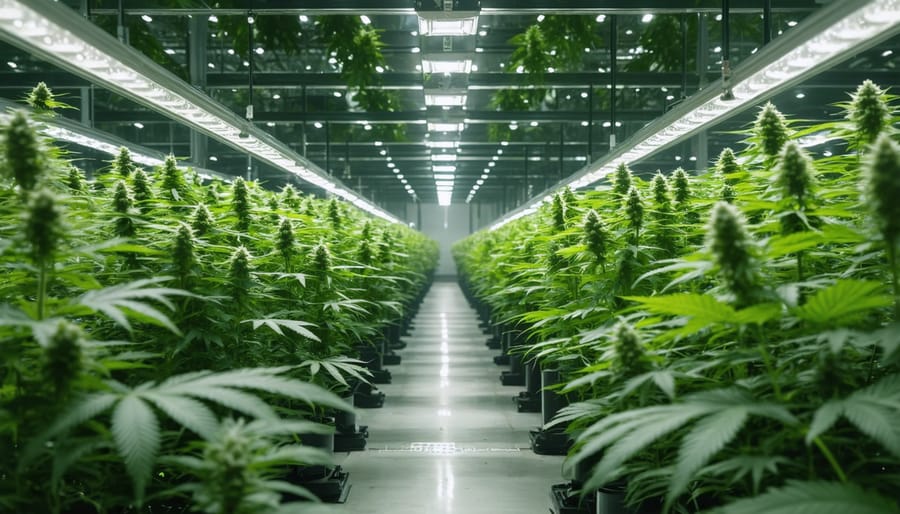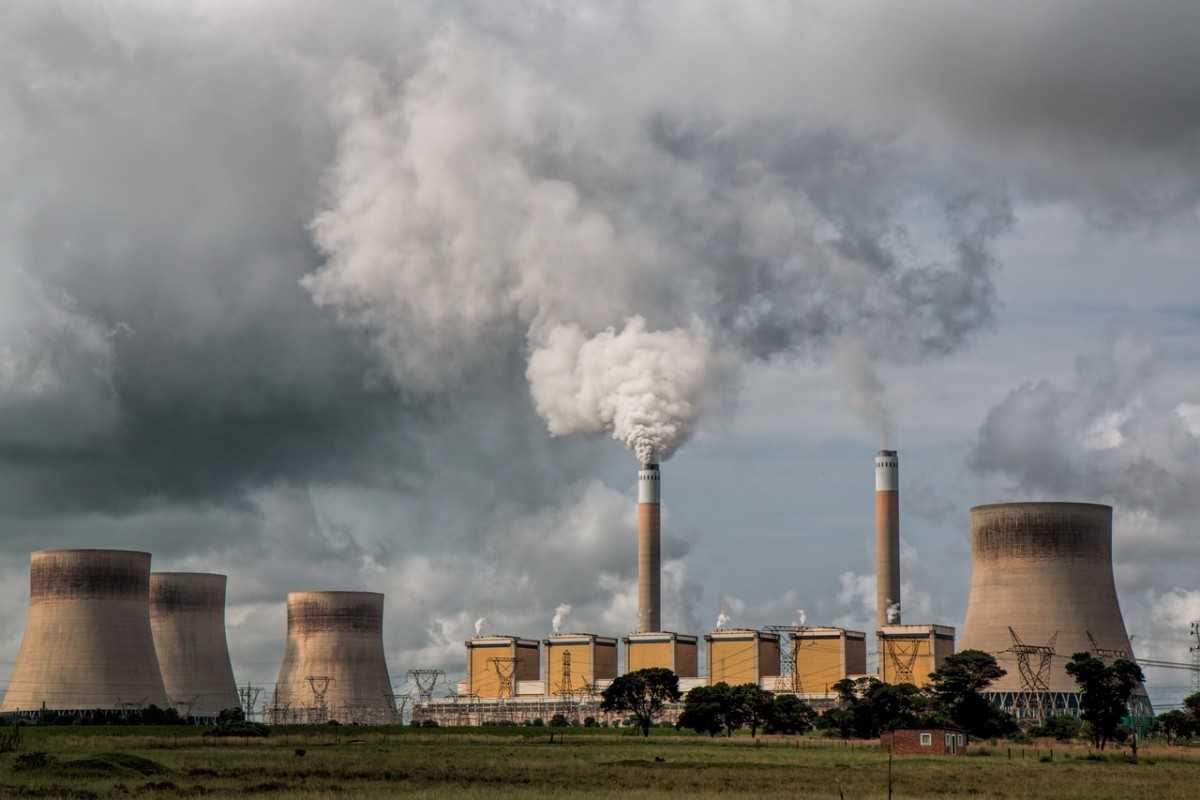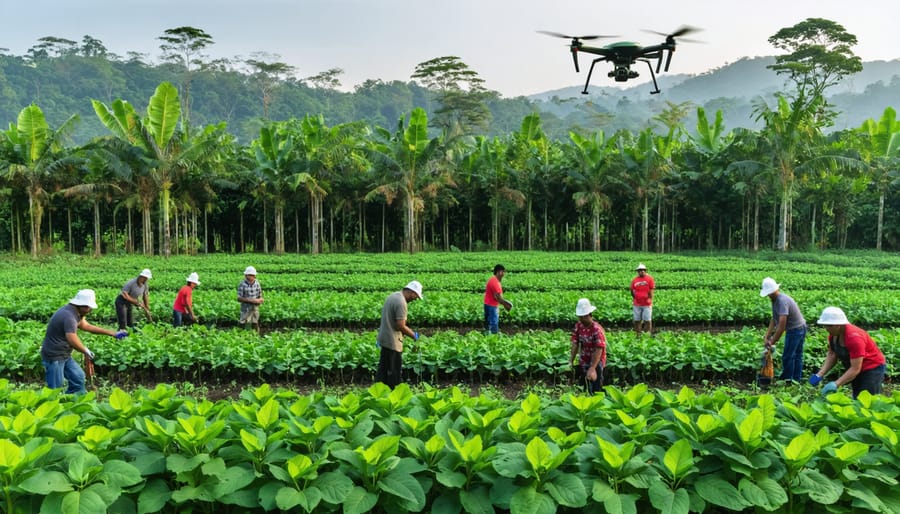Revolutionizing cannabis cultivation demands a fundamental shift toward sustainable industry practices that honor both environmental stewardship and traditional ecological knowledge. Through partnerships with leading industry innovators, cultivators are reimagining how we grow, process, and distribute cannabis while minimizing our ecological footprint.
Modern cannabis cultivation stands at a crucial intersection of agricultural innovation and environmental responsibility. By integrating advanced LED lighting systems, closed-loop water recycling, and regenerative soil practices, forward-thinking growers are achieving remarkable yields while reducing energy consumption by up to 40% and water usage by 60%. Indigenous communities’ time-tested cultivation methods, combined with cutting-edge technology, offer a blueprint for truly sustainable cannabis production that respects both the plant and the planet.
These evolving methodologies not only address critical environmental challenges but also position cannabis cultivation as a potential leader in sustainable agriculture. From small-scale organic operations to large commercial facilities, the industry is demonstrating that ecological responsibility and profitable production are not mutually exclusive but rather essential partners in ensuring a viable future for cannabis cultivation.
Energy-Efficient Growing Systems
LED Lighting Solutions
LED lighting technology represents a transformative shift in sustainable cannabis cultivation, aligning with the broader trends in renewable energy adoption in Canada. These advanced lighting systems consume up to 40% less energy compared to traditional high-pressure sodium (HPS) lights while delivering optimal spectral output for plant growth.
Modern LED fixtures offer cultivators precise control over light spectrums, allowing them to customize wavelengths for different growth stages. This capability not only enhances plant development but also reduces cooling costs, as LEDs generate significantly less heat than conventional lighting systems. Many Indigenous cultivators have embraced LED technology, incorporating it into their traditional growing practices while honoring their commitment to environmental stewardship.
The initial investment in LED systems, though higher than traditional lighting, typically pays for itself within 18-24 months through reduced energy costs and lower maintenance requirements. These systems also last considerably longer, with many manufacturers offering warranties of up to 50,000 hours – more than twice the lifespan of HPS lights.
For smaller operations, LED lighting provides the flexibility to scale production efficiently while maintaining consistent quality. The technology’s improved energy efficiency also reduces the carbon footprint of cultivation facilities, contributing to Canada’s broader sustainability goals and supporting the industry’s transition toward more environmentally responsible practices.
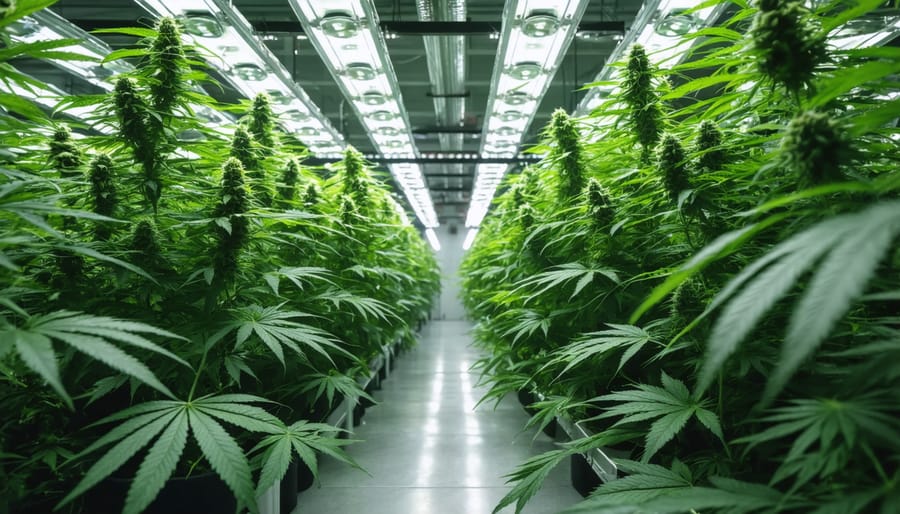
Climate Control Optimization
Climate control represents one of the most energy-intensive aspects of indoor cannabis cultivation, but innovative technologies and traditional knowledge are helping growers significantly reduce their environmental impact. Smart HVAC systems equipped with AI-driven sensors now optimize temperature and humidity levels automatically, reducing energy consumption by up to 40% compared to conventional systems.
Many Canadian cultivators are implementing heat recovery ventilation (HRV) systems, which capture and reuse thermal energy that would otherwise be lost. These systems are particularly effective in colder climates, where heating costs traditionally account for a substantial portion of operational expenses.
Indigenous communities have long practiced natural climate control methods, such as using thermal mass and strategic airflow. Modern facilities are now incorporating these principles alongside technology, creating hybrid solutions that maximize efficiency. For example, some operations use earth tubes – a system that pre-conditions air by running it through underground pipes where the soil maintains a relatively constant temperature.
Dehumidification is another crucial aspect where innovation is making a difference. New desiccant-based systems use up to 50% less energy than traditional refrigerant dehumidifiers while providing better control over humidity levels. Many facilities are also implementing variable frequency drives (VFDs) on fans and pumps, allowing equipment to run at optimal speeds rather than constantly at full power.
By combining these technologies with proper facility design and insulation, cannabis cultivators can maintain ideal growing conditions while significantly reducing their carbon footprint.
Water Conservation Practices
Recirculating Systems
Recirculating systems represent a revolutionary approach to cannabis cultivation that dramatically reduces water consumption while maintaining optimal growing conditions. These closed-loop systems, particularly hydroponics and aeroponics, can reduce water usage by up to 90% compared to traditional soil-based methods.
In hydroponic systems, plant roots are suspended in a nutrient-rich water solution that continuously circulates through the growing environment. Advanced filtration and monitoring systems ensure that water quality remains consistent while capturing and reusing runoff that would otherwise go to waste. This process not only conserves water but also allows for precise control over nutrient delivery and pH levels.
Aeroponic systems take water efficiency even further by using a fine mist to deliver nutrients directly to exposed plant roots. This method requires even less water than hydroponics while promoting faster growth and robust root development. The mist is collected, filtered, and reused, creating a nearly closed system that minimizes environmental impact.
Both systems incorporate Indigenous agricultural principles of resource stewardship and minimal waste. Many Canadian cultivators have successfully integrated these technologies with traditional knowledge, creating hybrid approaches that honor cultural practices while embracing innovation. Additionally, these systems are particularly valuable in northern communities where traditional outdoor cultivation may not be feasible due to climate constraints.
Proper maintenance and regular system monitoring are essential for success, but the water conservation benefits make these systems increasingly attractive for sustainable cannabis production.
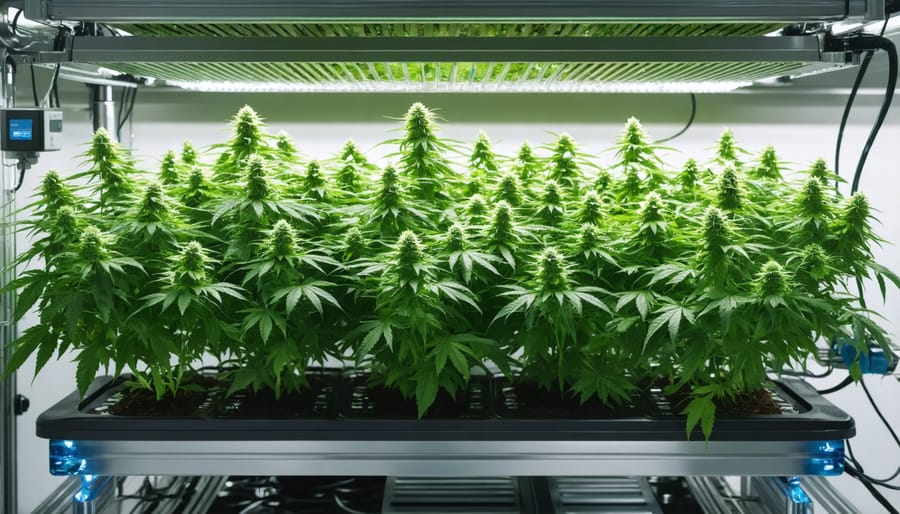
Rainwater Harvesting
Rainwater harvesting represents a cornerstone of sustainable cannabis cultivation, offering both environmental and economic benefits while honoring traditional water management practices. By implementing a well-designed collection system, growers can significantly reduce their reliance on municipal water sources and minimize their environmental impact.
The process begins with installing food-grade collection surfaces and gutters to capture precipitation. These systems typically include first-flush diverters that redirect initial runoff containing debris and contaminants away from storage tanks. Storage solutions range from simple rain barrels for small operations to sophisticated underground cisterns for commercial facilities, with capacity calculations based on local rainfall patterns and cultivation needs.
Filtration plays a crucial role in ensuring water quality. Many successful operations employ a multi-stage approach, incorporating leaf screens, sediment filters, and UV sterilization. This filtered rainwater often contains naturally occurring nutrients beneficial for cannabis growth, reducing the need for additional fertilizers.
Indigenous communities across Canada have long practiced sustainable water management, and their traditional knowledge offers valuable insights for modern cultivation. For instance, some growers have adapted ancient water retention techniques using strategically placed rocks and natural gradients to maximize collection efficiency.
When properly implemented, rainwater harvesting can supply up to 70% of a cultivation facility’s water needs, dramatically reducing operational costs while supporting environmental sustainability. This approach particularly benefits regions facing water scarcity or those with seasonal precipitation patterns.
Organic Soil Management
Living Soil Systems
Living soil systems represent the cornerstone of sustainable cannabis cultivation, drawing inspiration from nature’s own processes and Indigenous agricultural wisdom. These systems focus on creating and maintaining a complex web of beneficial microorganisms, fungi, and other soil life that work together to support plant health naturally.
At the heart of living soil cultivation is the soil food web, where beneficial bacteria, fungi, protozoa, and nematodes create a self-sustaining ecosystem. These microorganisms break down organic matter, cycle nutrients, and form symbiotic relationships with cannabis roots, enhancing nutrient uptake and plant immunity.
To establish and maintain living soil, cultivators incorporate diverse organic materials such as composted plant matter, worm castings, and mineral amendments. The practice of cover cropping, intercropping, and crop rotation helps maintain soil biodiversity and prevent nutrient depletion. Many Canadian cannabis producers have successfully implemented no-till farming methods, which preserve soil structure and reduce carbon emissions by minimizing soil disturbance.
Traditional Indigenous knowledge has long recognized the importance of soil health in sustainable agriculture. Many First Nations communities practice companion planting and utilize local organic materials to enhance soil fertility naturally. These time-tested methods are increasingly being integrated with modern sustainable farming practices, creating resilient growing systems that require fewer external inputs while producing high-quality cannabis crops.
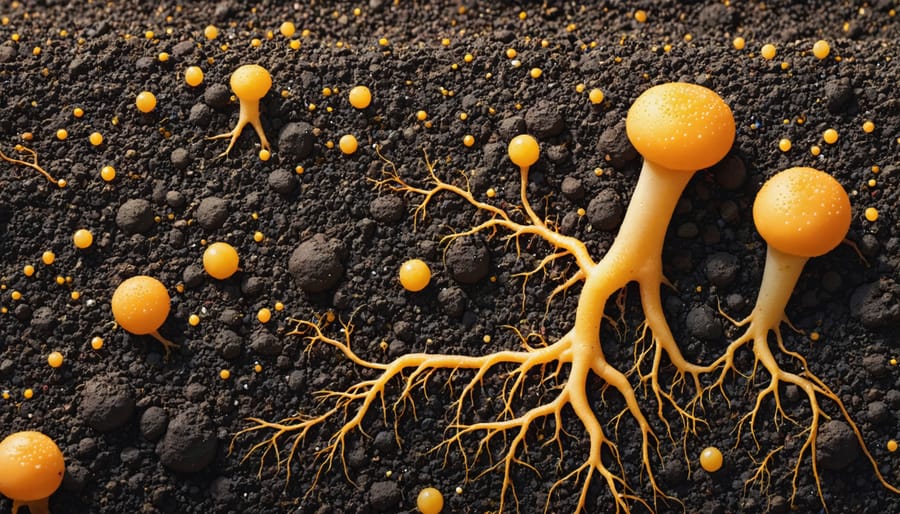
Composting and Waste Management
Implementing effective composting and waste management practices is crucial for creating a sustainable, closed-loop cannabis cultivation system. By recycling organic materials and plant waste, growers can significantly reduce their environmental impact while producing nutrient-rich soil amendments.
Cannabis cultivation generates various organic byproducts, including stems, leaves, and root balls, which can be transformed into valuable resources through proper composting. Traditional Indigenous farming practices have long emphasized the importance of returning nutrients to the soil, and modern cannabis operations can benefit from these time-tested principles.
To establish an effective composting system, maintain a balance of green materials (nitrogen-rich plant waste) and brown materials (carbon-rich items like dried leaves and wood chips) in a ratio of roughly 3:1. This mixture should be kept moist but not wet and turned regularly to ensure proper decomposition.
Many successful Canadian cultivators have implemented vermiculture (worm composting) systems to process cannabis waste efficiently. These systems produce nutrient-dense worm castings that can be reintegrated into growing media, reducing the need for synthetic fertilizers.
For larger operations, consider investing in industrial composting equipment or partnering with local waste management facilities that handle organic materials. Remember to follow regional regulations regarding cannabis waste disposal, which may require specific documentation or treatment methods before composting.
By establishing these circular systems, cultivators can minimize waste while creating valuable soil amendments, supporting both environmental sustainability and operational efficiency.
Indigenous Knowledge Integration
Indigenous communities have cultivated and utilized cannabis-like plants for centuries, developing sophisticated growing methods that harmonize with natural ecosystems. By incorporating traditional ecological practices into modern cannabis cultivation, growers can enhance sustainability while honoring ancestral wisdom.
Many Indigenous communities practiced companion planting, recognizing the beneficial relationships between different plant species. This approach naturally deters pests, enriches soil quality, and optimizes water usage. For example, the Three Sisters method of planting corn, beans, and squash together can be adapted for cannabis cultivation, with complementary plants supporting nutrient cycling and soil health.
Traditional knowledge also emphasizes the importance of seasonal timing and lunar cycles in cultivation. Indigenous growers historically planted according to natural rhythms, resulting in stronger plants and better yields while minimizing resource consumption. This wisdom can be integrated into modern growing schedules to reduce energy usage and optimize natural light cycles.
Water conservation techniques developed by Indigenous peoples, such as rainfall harvesting and strategic irrigation systems, offer valuable insights for sustainable cannabis cultivation. These methods often incorporate natural landforms and gravity-fed systems, reducing the need for energy-intensive pumping while ensuring efficient water distribution.
Indigenous soil management practices, including the use of organic amendments and biochar, demonstrate sophisticated understanding of soil ecology. These techniques not only improve plant health but also contribute to carbon sequestration and long-term soil fertility. Modern cannabis cultivators can adopt these practices to build living soils that require fewer synthetic inputs and maintain better moisture retention.
By collaborating with Indigenous knowledge keepers and communities, the cannabis industry can develop more sustainable cultivation methods that respect both traditional wisdom and modern environmental challenges. This integration supports biodiversity, reduces resource consumption, and helps preserve valuable cultural practices for future generations.
The implementation of Indigenous knowledge in cannabis cultivation also presents opportunities for economic partnerships with Indigenous communities, fostering mutual respect and sustainable development while addressing historical inequities in the agricultural sector.
As we look to the future of cannabis cultivation, the adoption of sustainable practices is no longer optional but essential for the industry’s long-term viability. The environmental challenges facing our planet demand that cultivators embrace methods that minimize resource consumption while maximizing crop yield and quality. Through the integration of traditional ecological knowledge and modern technology, we’re witnessing a transformation in how cannabis is grown.
The success stories from Indigenous communities and commercial operations across Canada demonstrate that sustainable cultivation isn’t just environmentally responsible—it’s economically viable. From water recycling systems and renewable energy adoption to living soil practices and integrated pest management, these methods are setting new standards for the industry.
Looking ahead, technological innovations in LED lighting, automated climate control, and precision agriculture will continue to enhance sustainability efforts. However, the true path forward lies in combining these advances with time-tested traditional growing methods and local knowledge. As regulations evolve and consumer awareness grows, sustainable practices will likely become industry standards rather than exceptions.
The future of cannabis cultivation depends on our collective commitment to environmental stewardship. By prioritizing sustainability, we not only protect our natural resources but also create a more resilient and responsible industry that benefits communities, cultivators, and consumers alike. The groundwork laid today through sustainable practices will ensure the cannabis industry continues to thrive while maintaining harmony with our environment.

